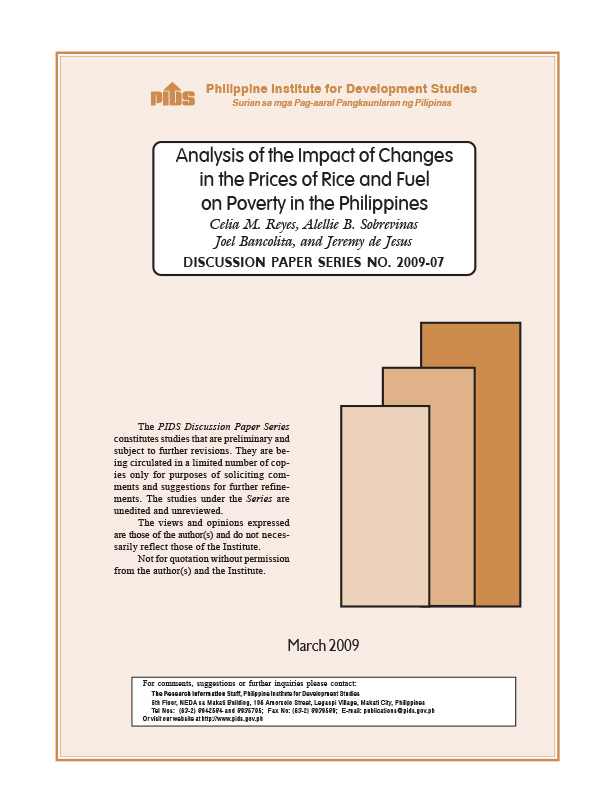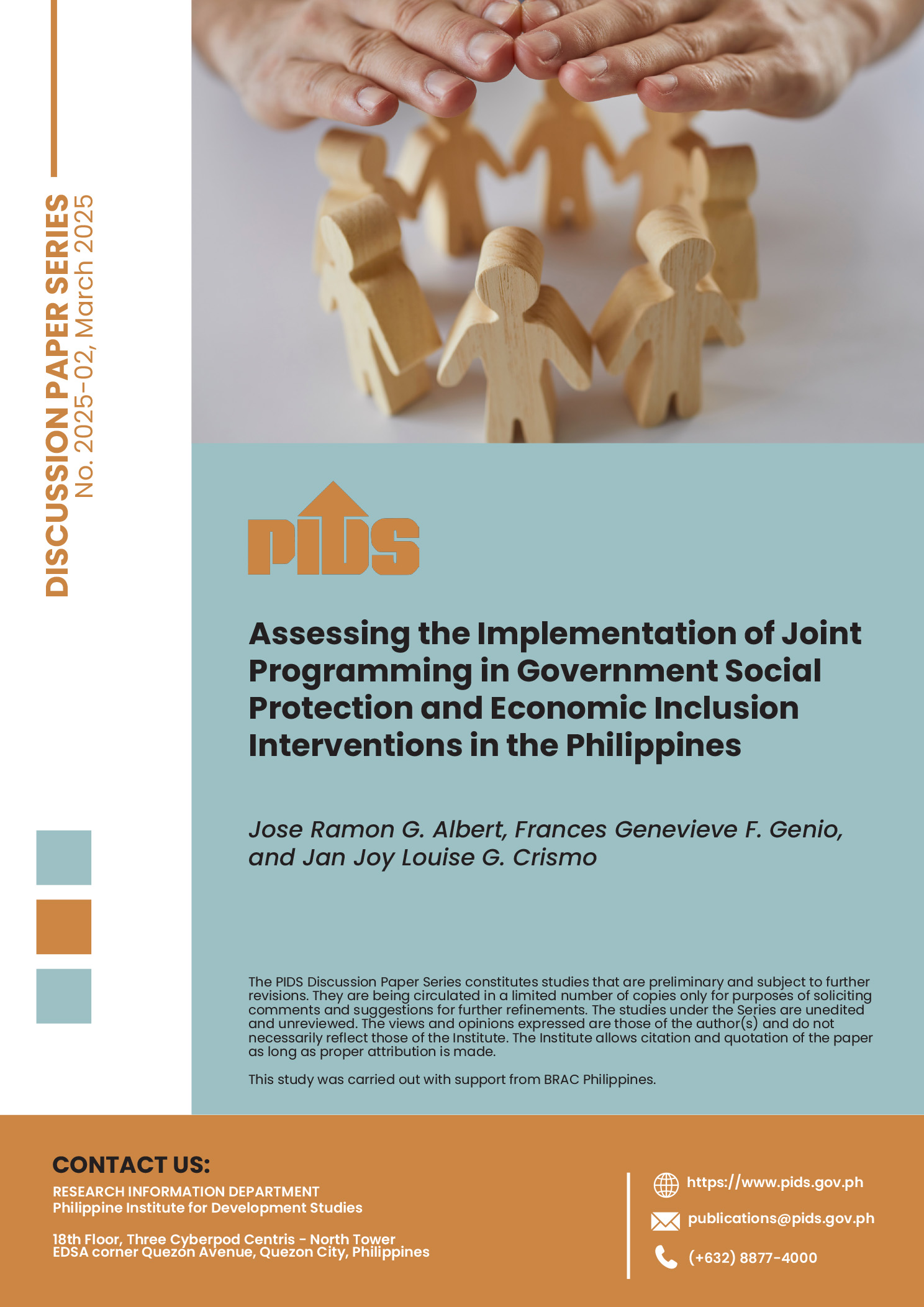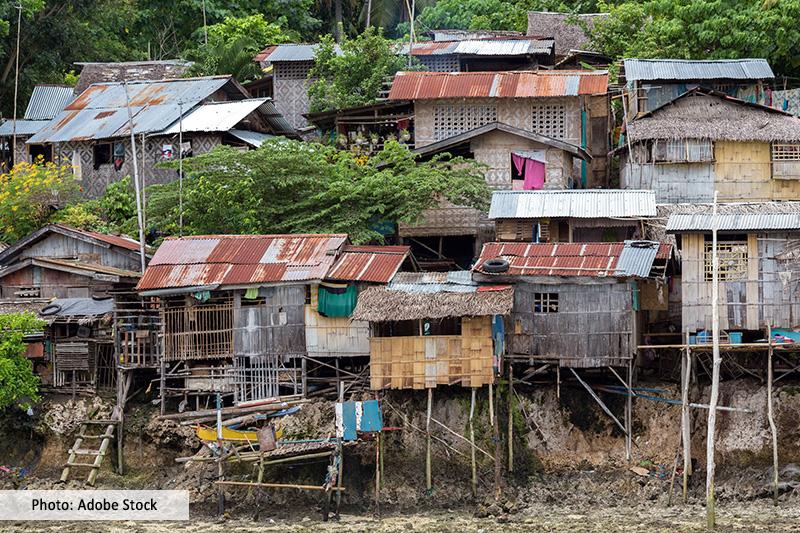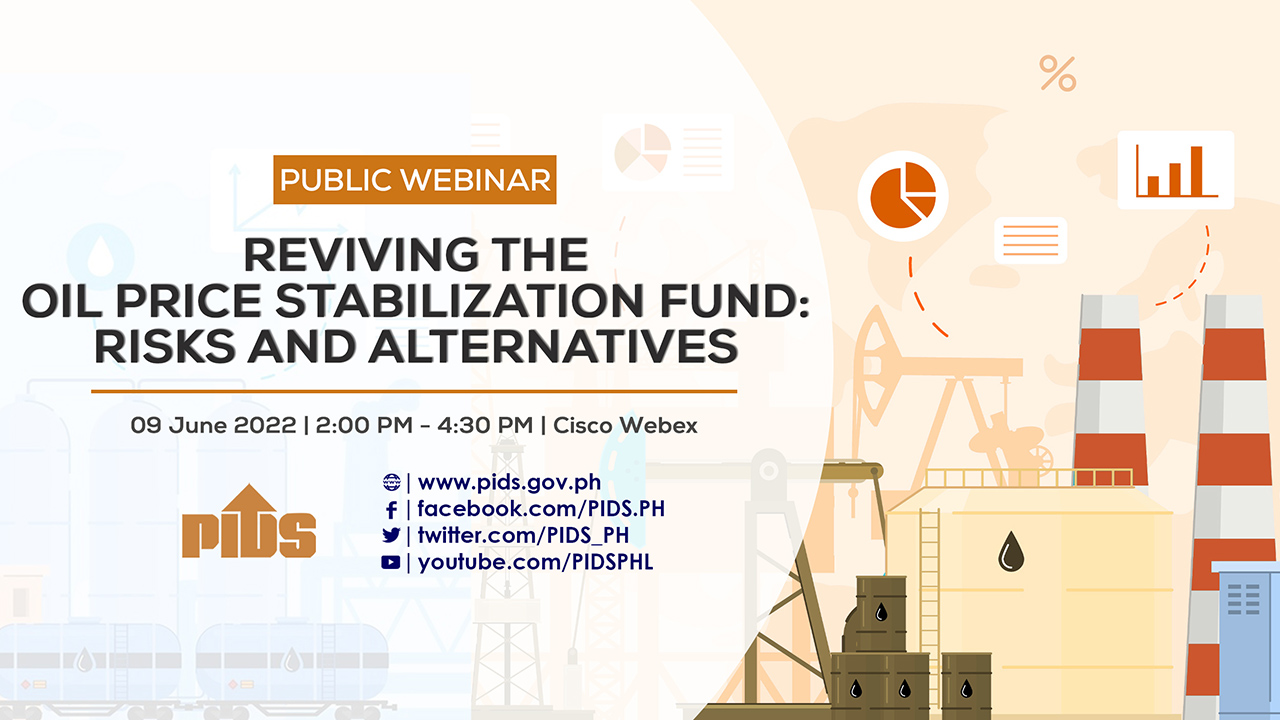The study aims to assess the impact of rising prices of rice and fuel on poverty in the Philippines. In particular, the variations in the potential effects among different group of households were analyzed using household level data. Results of the study confirm that the impact of increasing prices of rice and fuel vary across different groups of households depending on the sector of employment, level of urbanity, income group, and geographical location. In fact, there are losers and gainers from the recent increases in the prices of rice and fuel. In response to higher prices, households adopted different coping mechanisms, some of which are damaging and counterproductive in the medium- and long-run. The Philippine government has also responded by implementing programs that would mitigate the negative impact of soaring prices. It is recommended that household level data for all households in the community, such as those being generated by the community-based monitoring system (CBMS) being implemented by local government units, be used to identify eligible beneficiaries through some proxy means test model. This would help reduce leakage of program benefits to the nonpoor as well as ensure that the poor benefit from these programs.
Citations
This publication has been cited 4 times
- Borines, M.G., R.L. de Leon, and M.P. McHenry. 2011. Bioethanol production from farming non-food macroalgae in Pacific island nations: Chemical constituents, bioethanol yields, and prospective species in the Philippines. Renewable and Sustainable Energy Reviews, 15, no. 9, 4432-4435. . Elsevier.
- Mehta, Aashish and Shikha Jha. 2014. Pilferage from opaque food subsidy programs: Theory and evidence. Food Policy, 45(C), 69-79 . Elsevier.
- Mehta, Aashish, Shikha Jha, Pilipinas Quising. 2013. Self-targeted food subsidies and voice: Evidence from the Philippines. Food Policy, 41(C), 204-217. Elsevier.
- Muthalib, Abd Azis et. al. 2018. The influence of fuel prices and unemployment rate towards the poverty level in Indonesia. International Journal of Energy Economics and Policy, 8, no. 3, pages 37-42. Econjournals.













